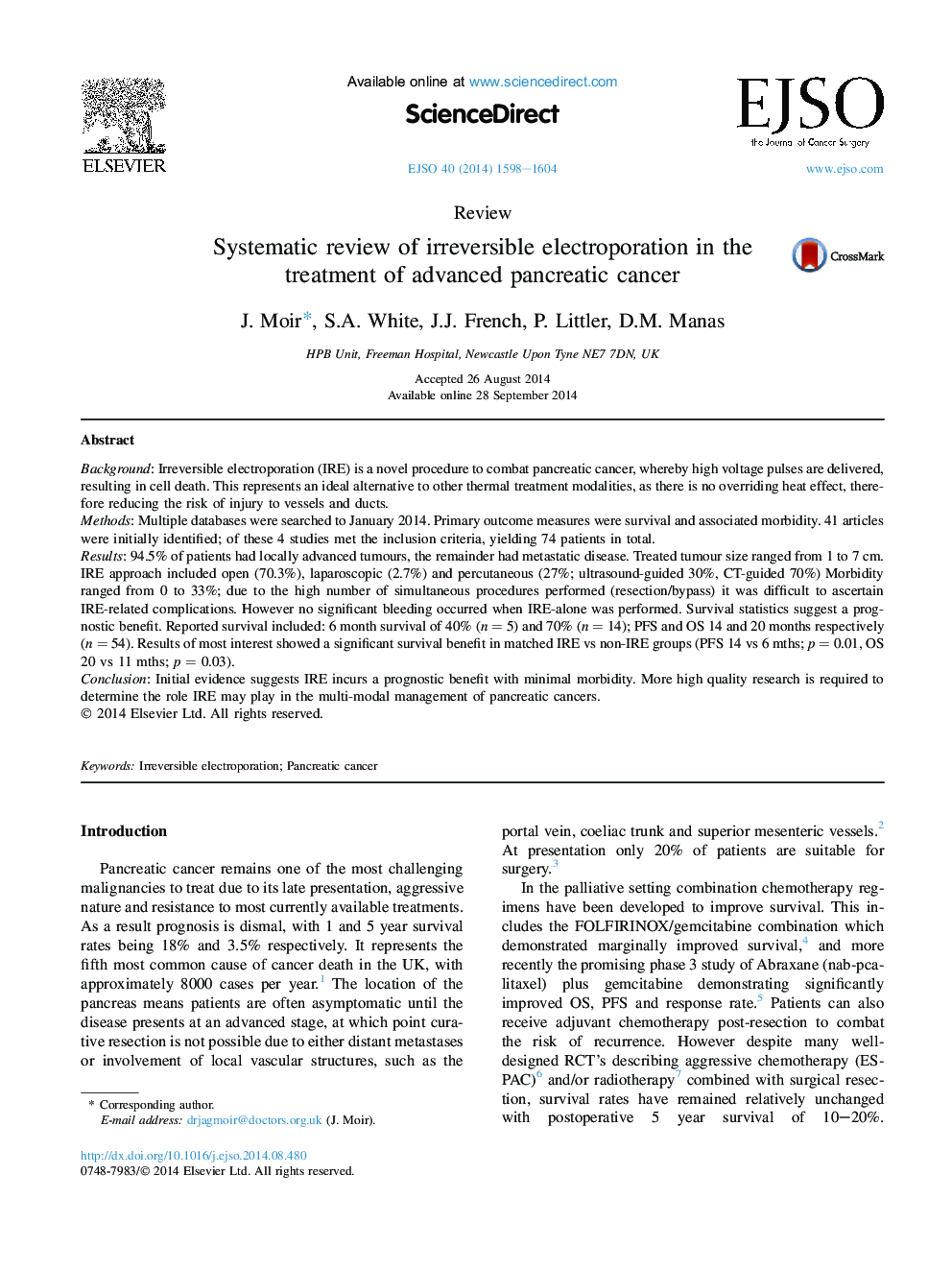| Article ID | Journal | Published Year | Pages | File Type |
|---|---|---|---|---|
| 3984921 | European Journal of Surgical Oncology (EJSO) | 2014 | 7 Pages |
BackgroundIrreversible electroporation (IRE) is a novel procedure to combat pancreatic cancer, whereby high voltage pulses are delivered, resulting in cell death. This represents an ideal alternative to other thermal treatment modalities, as there is no overriding heat effect, therefore reducing the risk of injury to vessels and ducts.MethodsMultiple databases were searched to January 2014. Primary outcome measures were survival and associated morbidity. 41 articles were initially identified; of these 4 studies met the inclusion criteria, yielding 74 patients in total.Results94.5% of patients had locally advanced tumours, the remainder had metastatic disease. Treated tumour size ranged from 1 to 7 cm. IRE approach included open (70.3%), laparoscopic (2.7%) and percutaneous (27%; ultrasound-guided 30%, CT-guided 70%) Morbidity ranged from 0 to 33%; due to the high number of simultaneous procedures performed (resection/bypass) it was difficult to ascertain IRE-related complications. However no significant bleeding occurred when IRE-alone was performed. Survival statistics suggest a prognostic benefit. Reported survival included: 6 month survival of 40% (n = 5) and 70% (n = 14); PFS and OS 14 and 20 months respectively (n = 54). Results of most interest showed a significant survival benefit in matched IRE vs non-IRE groups (PFS 14 vs 6 mths; p = 0.01, OS 20 vs 11 mths; p = 0.03).ConclusionInitial evidence suggests IRE incurs a prognostic benefit with minimal morbidity. More high quality research is required to determine the role IRE may play in the multi-modal management of pancreatic cancers.
